|
|
|
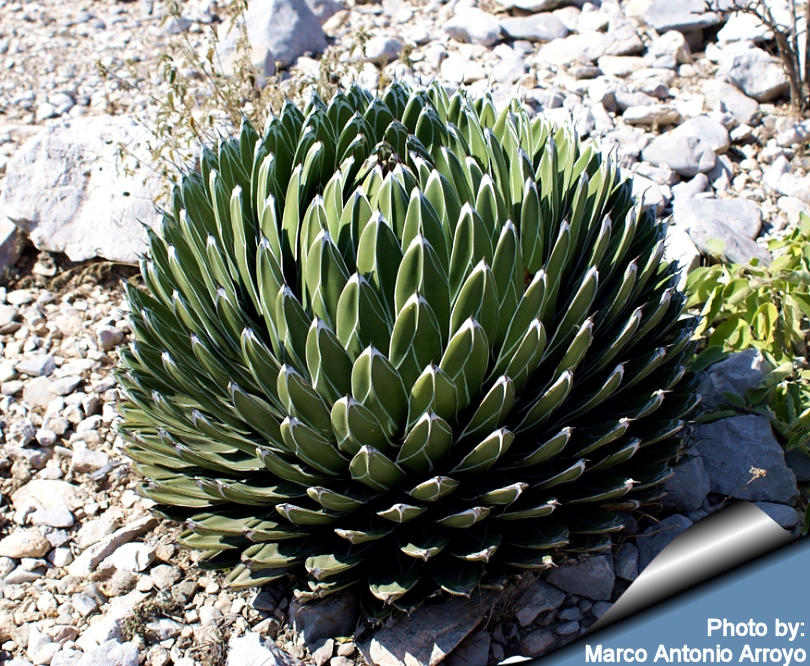
A wild plant in habitat from La Huasteca, in Monterrey, Nuevo Leon.
[click to see a big sized photo]
(Photo: Marco Antonio Arroyo - Mexico)
|
|
Description: A.
Victoria-reginae is a very slow growing but tough and beautiful
Agave. It is consider the to be one of the most beautiful and desirable
species. Forms individual slow growing dense rosettes up to 45 cm in
diameter (but usually rarely grows taller than 22 cm), most populations
are solitary, but some offset heavily (forma
caespitosa). It is extremely variable with the very open black-edged
form sporting a distinct name (King Ferdinand's agave, Agave
ferdinandi-regis) and several forms that are the more common
white-edged form. Several cultivars have been named with different
patterns of white leaf markings or no white markings (var. viridis)
or variegation.
Leaves: Short,15-20 cm long and
up to 3 cm
broad, rigid and thick, trigonous, dark green, and beautifully marked
with brilliant white-margins (The distinct longitudinal white markings
are unique, slightly raised, like mini-variegation bordering each leaf)
They are toothless, with only a short black, terminal spine. Leaves grow
close together and are arranged in globose regular rosettes.
Flower: The inflorescence takes
the form of a spike, from 2 to 4 metres high, containing many paired
flowers of various colours, often with shades of purple red.
Blooming season: Summer. As with
all types of Agave
it have a long life cycle and sets flowers after approximately 20
to 30 years of vegetative growth, and
the effort to
produce the flowers exhausts the plant which dies within a short time.
Traditional uses:
These plants were discovered by the
Spaniards in the 17th century where the local Indians used them for
fibres, food and to make an alcoholic drink like Tequila. The fibres
were used to make clothing and ropes. Most of the plant was used for
food, raw and cooked. Flowering stems and flowers are edible and were
roasted or boiled.
|
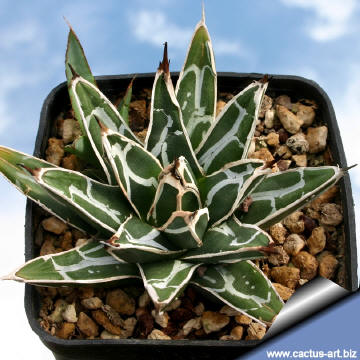 |
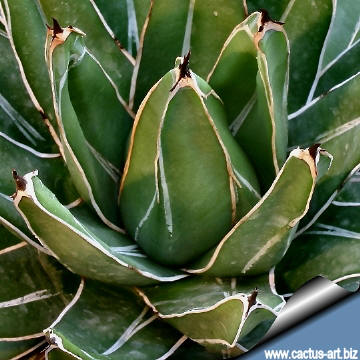 |
|
With their exquisite
symmetry and fantastic white-on-green markings, they are among the few
agave
of a proper size for most houses. Excellent for the cactus garden or in
pots, where they stay
manageable sized plants for many years.
|
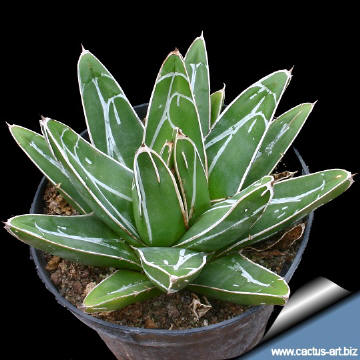 |
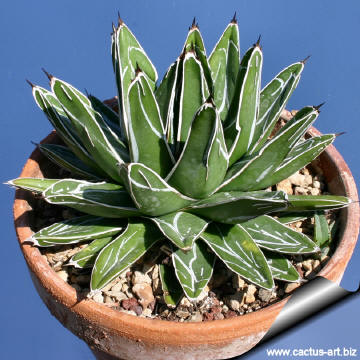 |
|


Advertising
|
|
|
|
|
|
|
Family: Agavaceae
Scientific Name: Agave victoria-reginae T. Moore, 1875.
cult.
Origin: It is endemic to the arid lower elevations of
the Sierra Madre Oriental Mountains in the state of Coahuila and south
of Nuevo Leon in north-eastern Mexico (Huasteca
canyon, Sierras de las Noas, Viesca, and adjacent areas just south of Saltillo).
Habitat: It grows mainly in calcareous soil
characterised by a desert or semi-desert environment and is found in profusion
on the steep slopes and near vertical cliffs of the canyon walls
where forms large colonies. It is often associated with
Hechtia sp. a genus of bromeliads which we often found growing with
cacti.
While
Agave victoria-reginae remains endangered in its native habitat, it has
become very common in cultivation.
Common Names include: (Mexican) Noa
Etymology:
It has been
named and described in honour of Queen Victoria of England by
Thomas Moore.
|
|
|
|
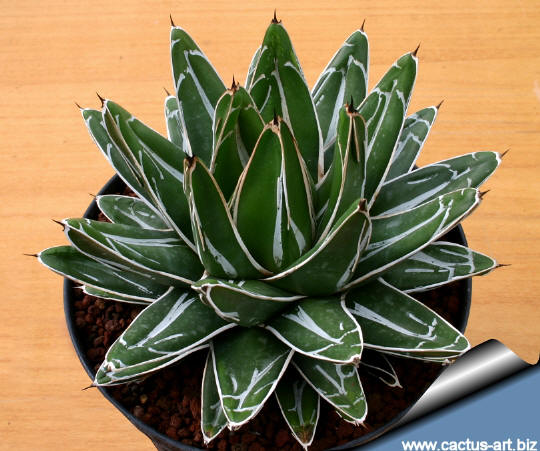
The distinct white markings are unique, like mini-variegation bordering
each leaf.
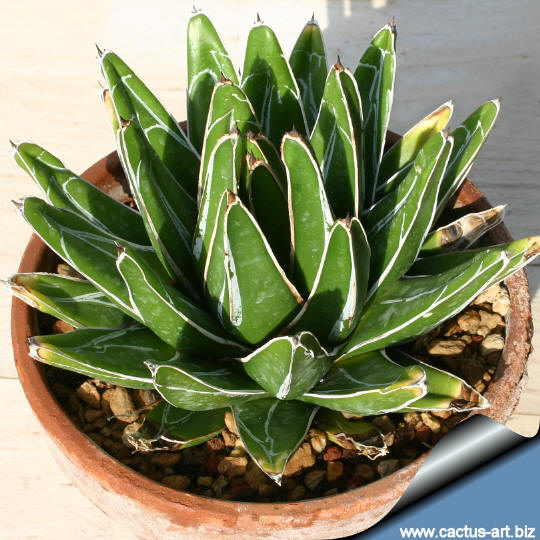
Cultivation: It requires well-drained soil and
light shade to
full sun
exposure, but they
prefer some afternoon shade during the hottest summer month to avoid
being fried by sun. It should be kept rather dry in winter or
dormant season with minimum temperatures above zero in order to obtain
good results,but
it will tolerate quite low
temperatures ( -10° C), particularly when dry.
To give this marvellous plant vigour and life, water well during spring
and summe and let it become barely moist between waterings.
Fertilizer: Feed only twice a year, once in April and once in July with
a water solublepotassium-rich fertilizer. Along the coast or in areas
where there are no frosts, these plants may be cultivated with success
outdoors where their beauty is better observed. In cold climates it is
adviseable to cultivate these plants in pots in order to protect them
during the winter in dry, fresh rooms. Plant Pests: Prone to mealy bugs
and scale. Always inspect any new plant for pests before introducing it
to your home or greenhouse. Requires good ventilation and avoid
over-watering.
Propagation: It
reproduces thanks to the seeds or by the
suckers produced
at the base of the stems in the spring. Propagate them in evenly moist
soil, mist occasionally and keep in filtered sunlight until they are
growing. |
|
Photo of conspecific taxa, varieties, forms and cultivars of Agave
victoria reginae:
|
|